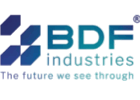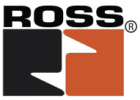O-I Glass, Inc. (NYSE: OI) today announced it completed the sale of its Australia and New Zealand (ANZ) business unit to Visy Industries. Gross proceeds approximated AUD $947 million including a related sale-leaseback agreement which approximated AUD $214 million. Based on recent currency exchange rates, gross proceeds represented approximately USD $677 million. Approximately 95 percent of proceeds are being received at time of closing and the remaining balance will be paid within 12 months of closing without conditions precedent. Net proceeds will be principally used to reduce debt.
O-I ANZ is the largest manufacturer of glass bottles and containers in Australia and New Zealand and the business generated sales of approximately AUD $754 million and EBITDA of approximately AUD $124 million in 2019.
This divestiture substantially completes an in-depth strategic review of the company’s global business portfolio and operating structure.
About O-I Glass
At O-I Glass, Inc. (NYSE: OI), we love glass and we’re proud to make more of it than any other glass bottle or jar producer in the world. We love that it’s beautiful, pure and completely recyclable. With global headquarters in Perrysburg, Ohio, we are the preferred partner for many of the world’s leading food and beverage brands. Working hand and hand with our customers, we give our passion and expertise to make their bottles iconic and help build their brands around the world. With more than 25,500 people at 72 plants in 20 countries, O-I has a global impact, achieving revenues of $6.7 billion in 2019. For more information, visit o-i.com.
Forward-Looking Statements
This press release contains “forward-looking” statements related to O-I Glass, Inc. (“O-I Glass” or the “company”) within the meaning of Section 21E of the Securities Exchange Act of 1934, as amended (the “Exchange Act”) and Section 27A of the Securities Act of 1933. Forward-looking statements reflect the company’s current expectations and projections about future events at the time, and thus involve uncertainty and risk. The words “believe,” “expect,” “anticipate,” “will,” “could,” “would,” “should,” “may,” “plan,” “estimate,” “intend,” “predict,” “potential,” “continue,” and the negatives of these words and other similar expressions generally identify forward-looking statements.
It is possible that the company’s future financial performance may differ from expectations due to a variety of factors including, but not limited to the following: (1) the company’s ability to obtain the benefits it anticipates from the Corporate Modernization, (2) risks inherent in, and potentially adverse developments related to, the Chapter 11 bankruptcy proceeding involving the company’s wholly owned subsidiary Paddock, that could adversely affect the company and the company’s liquidity or results of operations, including the impact of deconsolidating Paddock from the company’s financials, risks from asbestos-related claimant representatives asserting claims against the company and potential for litigation and payment demands against us by such representatives and other third parties, (3) the amount that will be necessary to fully and finally resolve all of Paddock’s asbestos-related claims and the company’s obligations to make payments to resolve such claims under the terms of its support agreement with Paddock, (4) the company’s ability to manage its cost structure, including its success in implementing restructuring or other plans aimed at improving the company’s operating efficiency and working capital management, achieving cost savings, and remaining well-positioned to address the company’s legacy liabilities, (5) the company’s ability to acquire or divest businesses, acquire and expand plants, integrate operations of acquired businesses and achieve expected benefits from acquisitions, divestitures or expansions, (6) the company’s ability to achieve its strategic plan, (7) foreign currency fluctuations relative to the U.S. dollar, (8) changes in capital availability or cost, including interest rate fluctuations and the ability of the company to refinance debt at favorable terms, (9) the general political, economic and competitive conditions in markets and countries where the company has operations, including uncertainties related to Brexit, economic and social conditions, disruptions in the supply chain, competitive pricing pressures, inflation or deflation, changes in tax rates and laws, natural disasters, and weather; (10) the impact of COVID-19 and the various governmental, industry and consumer actions relate thereto, (11) the company’s ability to generate sufficient future cash flows to ensure the company’s goodwill is not impaired, (12) consumer preferences for alternative forms of packaging, (13) cost and availability of raw materials, labor, energy and transportation, (14) consolidation among competitors and customers, (15) unanticipated expenditures with respect to data privacy, environmental, safety and health laws, (16) unanticipated operational disruptions, including higher capital spending, (17) the company’s ability to further develop its sales, marketing and product development capabilities, (18) the failure of the company’s joint venture partners to meet their obligations or commit additional capital to the joint venture, (19) the ability of the company and the third parties on which it relies for information technology system support to prevent and detect security breaches related to cybersecurity and data privacy, (20) changes in U.S. trade policies, and the other risk factors discussed in the company’s Annual Report on Form 10-K for the year ended December 31, 2019, Quarterly Report on form 10-Q for the quarterly period ended March 31, 2020 and any subsequently filed Annual Report on Form 10-K, Quarterly Reports on Form 10-Q or the company’s other filings with the Securities and Exchange Commission.
It is not possible to foresee or identify all such factors. Any forward-looking statements in this document are based on certain assumptions and analyses made by the company in light of its experience and perception of historical trends, current conditions, expected future developments, and other factors it believes are appropriate in the circumstances. Forward-looking statements are not a guarantee of future performance and actual results or developments may differ materially from expectations. While the company continually reviews trends and uncertainties affecting the company’s results or operations and financial condition, the company does not assume any obligation to update or supplement any particular forward-looking statements contained in this document.


























